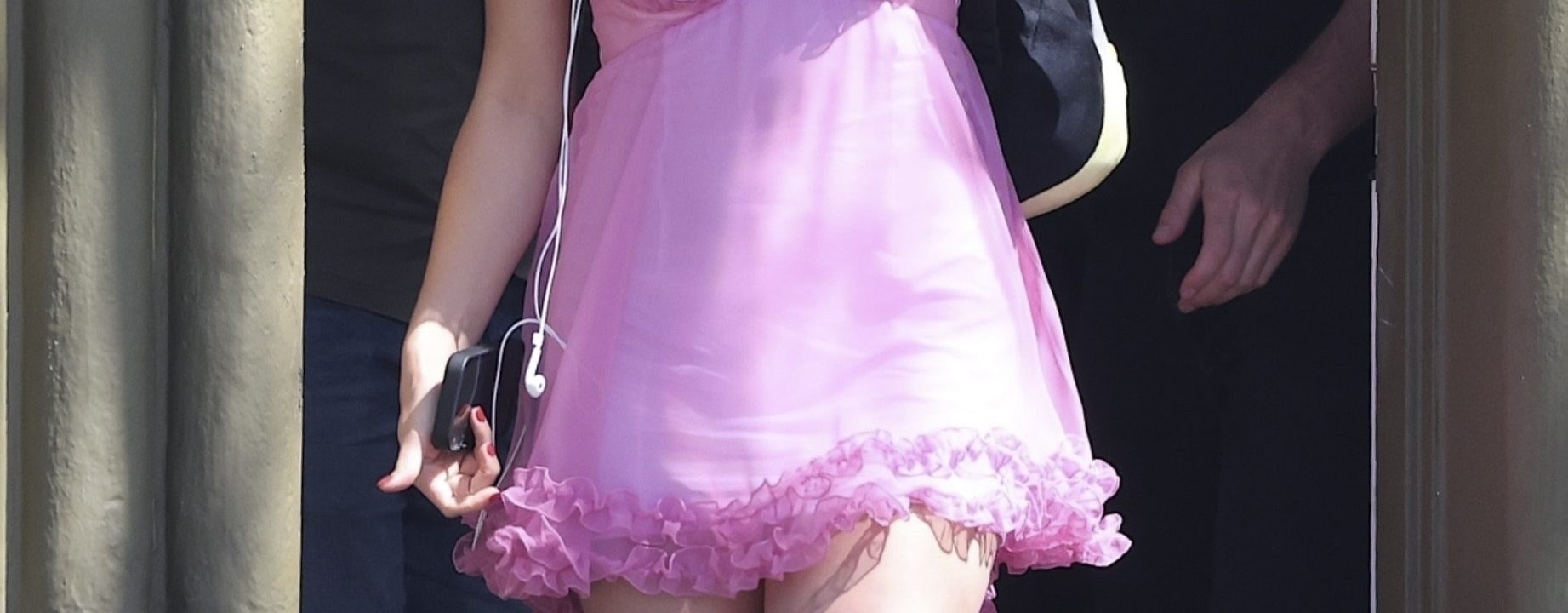The last time we explored Addison Rae’s beauty and wellness routine for her *Vogue Beauty Secrets* feature, she shared a detailed 16-step skincare and makeup regimen—complete with matcha, coffee, and an instant swipe of lipstick in the morning. Since then, the “Diet Pepsi” singer seems to have broadened her wellness habits, experimenting with an alternative therapy that dates back to ancient Egypt and remains popular among celebrities today.
Rae was recently spotted in Los Angeles wearing a pink frilly babydoll dress. While her long blonde hair flowed in the wind, it didn’t quite hide the faint circular marks on her back—likely the result of cupping therapy.
**Photo: Backgrid**
Cupping gained widespread attention during the 2016 Olympics when swimmer Michael Phelps was seen with distinct circular discolorations on his back as he raced to victory. He even shared the process on Instagram, showing cups being applied to the backs of his legs.
Over the years, these telltale cupping marks have appeared on numerous celebrities. The trend saw a particular resurgence in the early 2000s, with Gwyneth Paltrow famously sporting them on a 2004 red carpet. At the time, her rep confirmed it was a regular part of her routine. Jennifer Aniston, Victoria Beckham, and more recently, Kim Kardashian, Lady Gaga (who deals with fibromyalgia-related chronic pain), and Hailey Bieber have also been seen with the marks.
**Photo: Getty Images**
**Photo: Getty Images**
Cupping therapy has roots in ancient Egyptian, Chinese, and Middle Eastern cultures, spanning thousands of years. This traditional practice involves placing cups on the skin—typically the back, stomach, arms, or legs—to create suction. The force pulls the skin upward, breaking tiny blood vessels beneath the surface (which causes the circular marks). The idea is that this stimulates blood flow, drawing it toward or away from specific areas to relieve pain and supposedly flush out toxins. It’s believed to help with inflammation and has been used to treat back pain, high blood pressure, arthritis, migraines, and irritable bowel syndrome.
There are a few variations of cupping:
– **Dry cupping** uses heat to create suction.
– **Running cupping** involves applying lotion to glide the cups across the skin.
– **Wet (or bleeding) cupping** includes making small punctures to draw out blood.
While medical doctors may offer cupping, it’s also commonly performed by acupuncturists, chiropractors, massage therapists, and physical therapists.
In traditional Eastern medicine, cupping is often paired with acupuncture. Taoist philosophy links it to balancing *Qi* by harmonizing *Yin* (negative energy) and *Yang* (positive energy). Similarly, Ayurvedic medicine in India includes a blood detoxification technique called *Ghati Yantra*, resembling wet cupping.
Ada Ooi, a traditional Chinese medicine practitioner, previously explained the process to *British Vogue*. While the marks fade in about 10 days, she noted that their color and pattern reflect the level of blood stagnation and toxin buildup in the area—which varies from person to person. “Once the congestion is broken down, *Qi*, fluids, and blood circulate more freely,” she said. “It’s like filtering and flushing out murky water.”
However, scientific evidence supporting cupping’s benefits remains limited. A small 2023 review suggested it might help with certain musculoskeletal and sports-related conditions (like neck and back pain), but the study was narrow in scope. Another 2022 review found wet cupping effective for lower back pain. As *Harvard Health* points out, high-quality research on cupping is scarce, making it difficult to definitively assess its effectiveness.Cupping. The most reliable research studies are “blinded placebo-controlled trials,” where neither the patient nor the researcher knows whether the treatment is real or a placebo. However, this kind of controlled environment is nearly impossible to achieve with cupping. Additionally, pain is notoriously difficult to measure accurately, as Harvard Health points out.
Cupping therapy is not recommended for pregnant individuals, those with anemia, skin conditions like eczema, or bleeding disorders such as hemophilia. While it’s generally considered low-risk for complications, it’s always best to consult a healthcare provider before using it to address specific symptoms. That said, as Ooi told *British Vogue*, cupping has seen a resurgence in popularity post-COVID, fueled by the demand for quick wellness solutions. “It feels good during and after the session, while also addressing deep, lingering tension in the body,” Ooi explains.
Well, Addison Rae has a pop anthem-filled album to finish, so we won’t deny her any short-term relief she needs to get the job done.
